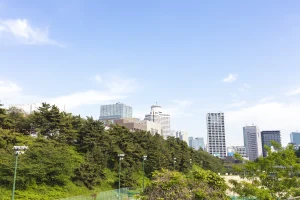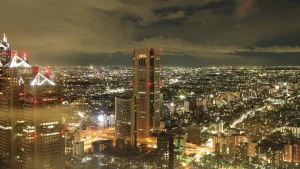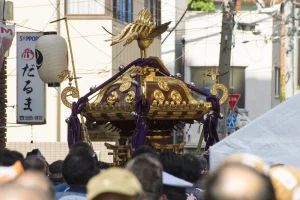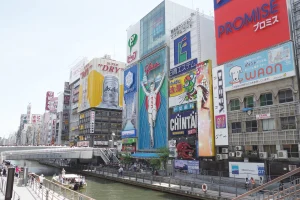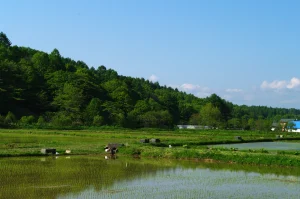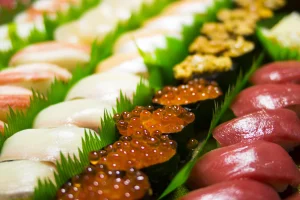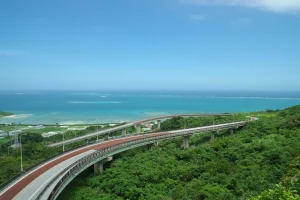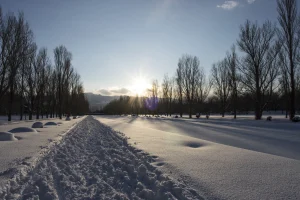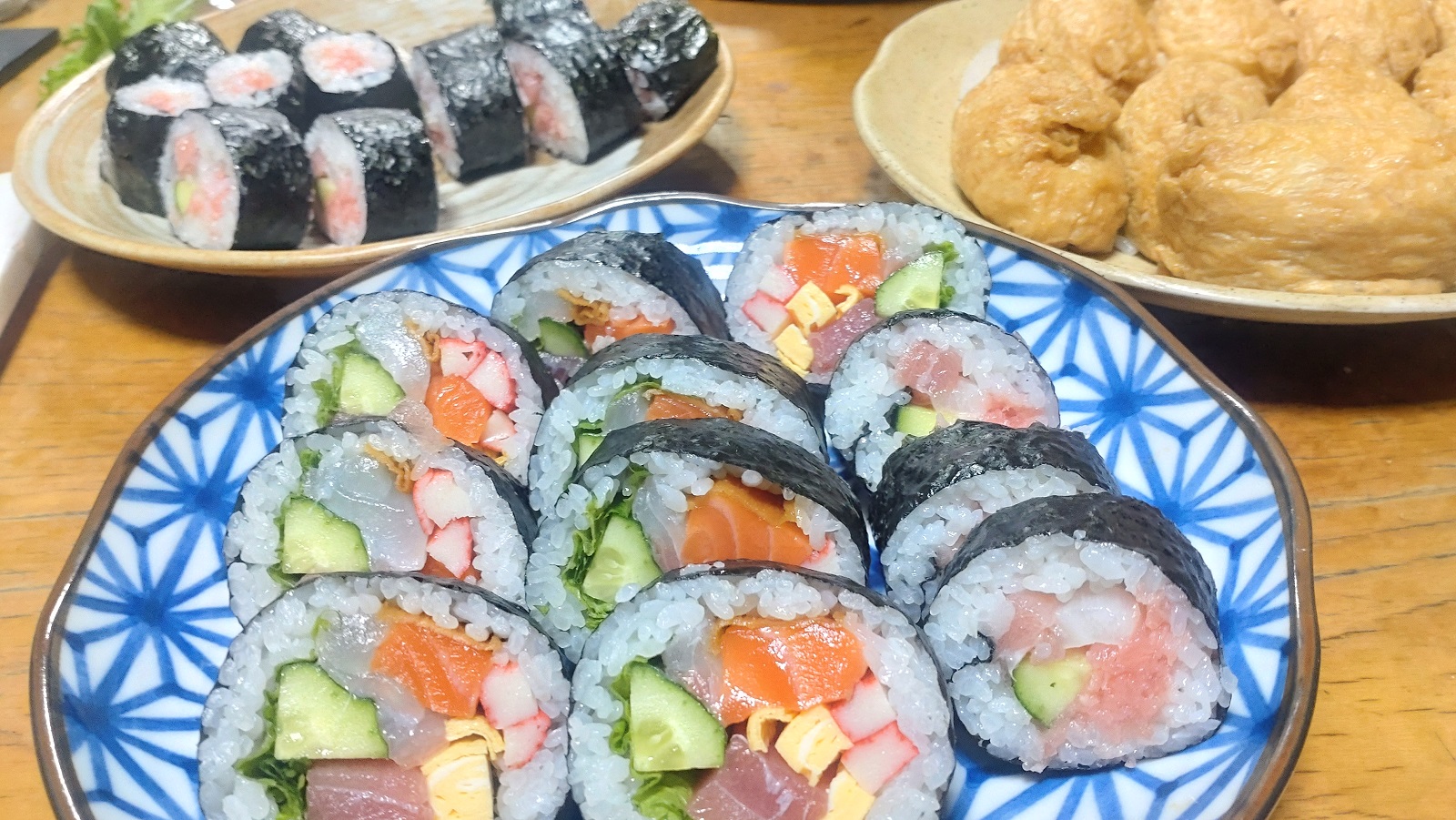Regional Divisions of Japan
This page provides a brief introduction to Japan’s geographical features and major cities in each region. By exploring the unique characteristics and representative cities of each area, our goal is to help you understand Japan’s regional structure and discover its many attractions.
In Japan, local municipalities are divided by prefectures, but they are often classified in various ways based on electoral districts, administrative jurisdictions, or traditional categorizations.
Typically, classifications such as the “seven regional divisions” including “Hokkaido,” “Tohoku,” “Kanto,” “Chubu,” “Kinki,” “Chugoku-Shikoku,” “Kyushu,” or an “eight regional division” when Chugoku and Shikoku are separated, are commonly used. Sometimes, divisions based on east-west or north-south distinctions are also employed.
Adjacent prefectures may share similarities in climate and culture, but each prefecture puts effort into promoting its local charm through various means, investing in tourism and events.
Additionally, we also introduce traditional local dishes from various regions of Japan on the following page.
Hokkaido and Tohoku

The northernmost part of Japan is renowned for its breathtaking natural landscapes, offering a haven for outdoor enthusiasts with activities like skiing and hiking. Further south, the northeastern region is celebrated for its rich cultural heritage and diverse culinary traditions, providing travelers with a blend of scenic wonders and cultural experiences.
Hokkaido (北海道 ほっかいどう) – Sapporo (札幌 さっぽろ)
- Largest City: Sapporo (札幌 さっぽろ)
Hokkaido, Japan’s northernmost island, boasts stunning natural beauty and diverse outdoor activities year-round. Its capital, Sapporo, is renowned for its vibrant city life, world-class cuisine, and annual Snow Festival. From skiing in winter to flower viewing in summer, Hokkaido offers unforgettable experiences for nature lovers and urban explorers alike.
Aomori (青森県 あおもりけん) – Aomori (青森 あおもり)
- Largest City: Aomori (青森 あおもり)
Aomori Prefecture, located in the northern Tohoku region of Japan, is renowned for its rich cultural heritage, stunning natural landscapes, and delicious seafood. Its capital city, Aomori, is famous for its Nebuta Festival, where giant illuminated floats parade through the streets. Visitors can also enjoy scenic views of the Tsugaru Strait and indulge in fresh seafood delicacies at local markets. With its blend of tradition and natural beauty, Aomori offers a unique and memorable experience for travelers.
Iwate (岩手県 いわてけん) – Morioka (盛岡 もりおか)
- Largest City: Morioka (盛岡 もりおか)
Iwate Prefecture, located in the Tohoku region of Japan, is known for its rugged coastline, picturesque mountains, and rich cultural heritage. Its capital city, Morioka, is famous for its historic sites, traditional crafts, and vibrant local cuisine. Visitors can explore the scenic beauty of places like Tono, known for its folk tales, or enjoy local specialties such as Wanko Soba and Jajamen noodles. With its blend of natural wonders and cultural treasures, Iwate offers a memorable experience for travelers seeking authentic Japanese charm.
Miyagi (宮城県 みやぎけん) – Sendai (仙台 せんだい)
- Largest City: Sendai (仙台 せんだい)
Miyagi Prefecture, situated in Japan’s Tohoku region, is renowned for its stunning coastal scenery, historic landmarks, and culinary delights. Its capital city, Sendai, often called the “City of Trees,” blends modernity with tradition, offering visitors a diverse range of experiences. From exploring the historic Zuihoden mausoleum to indulging in the local specialty, grilled beef tongue, Miyagi presents a tapestry of cultural richness and natural beauty. With its welcoming atmosphere and vibrant city life, Sendai embodies the spirit of hospitality that defines Miyagi Prefecture.
Akita (秋田県 あきたけん) – Akita (秋田 あきた)
- Largest City: Akita (秋田 あきた)
Aomori Prefecture, located in the Tohoku region of Japan, is renowned for its rich cultural heritage, stunning natural landscapes, and delicious seafood. Its capital city, Aomori, is famous for its Nebuta Festival, where giant illuminated floats parade through the streets. Visitors can also enjoy scenic views of the Tsugaru Strait and indulge in fresh seafood delicacies at local markets. With its blend of tradition and natural beauty, Aomori offers a unique and memorable experience for travelers.
Yamagata (山形県 やまがたけん) – Yamagata (山形 やまがた)
- Largest City: Yamagata (山形 やまがた)
Yamagata Prefecture, nestled in Japan’s scenic Tohoku region, boasts breathtaking natural landscapes and a rich cultural heritage. Its capital city, Yamagata, offers a blend of traditional charm and modern convenience. Renowned for its delicious cherries and hot springs, Yamagata City invites visitors to savor its local delicacies and relax in its soothing thermal baths. With historic temples, picturesque gardens, and stunning mountain views, Yamagata Prefecture promises an unforgettable journey through Japan’s rural beauty and cultural treasures.
Fukushima (福島県 ふくしまけん) – Fukushima (福島 ふくしま)
- Largest City: Fukushima (福島 ふくしま)
Fukushima Prefecture, located in Japan’s picturesque Tohoku region, is renowned for its natural beauty and historical significance. Its capital city, Fukushima, offers a blend of modern amenities and traditional charm. The city boasts historic sites such as Fukushima Castle and vibrant cultural events like the annual Waraji Festival. Visitors can also explore the stunning scenery of nearby attractions like the Bandai-Azuma Skyline and enjoy local delicacies such as Fukushima’s famous peaches and sake. With its rich history, scenic landscapes, and warm hospitality, Fukushima City welcomes travelers to experience the best of Japanese culture and nature.
Kanto
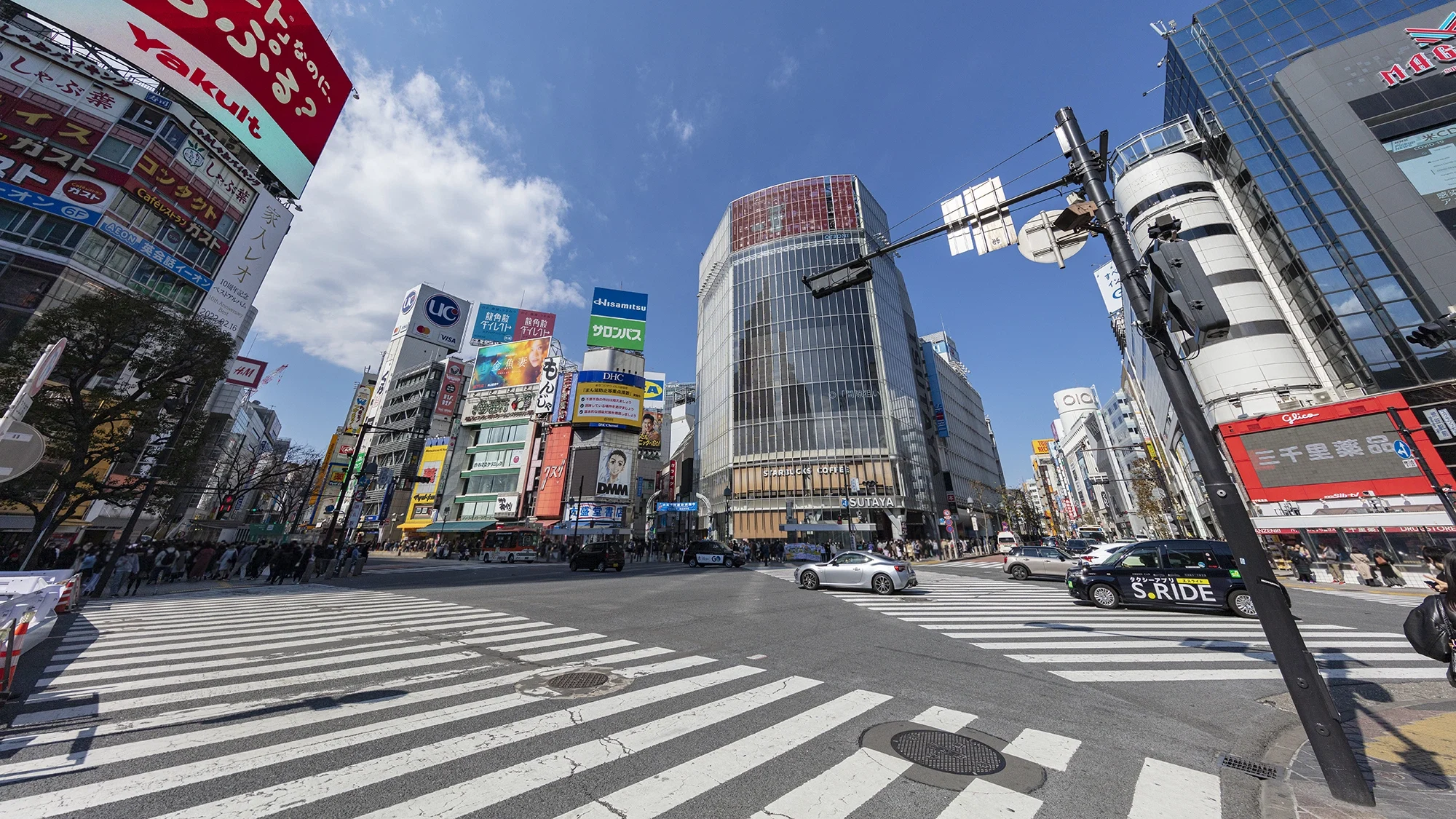
The eastern region of Japan, known as Kanto, offers a dynamic blend of urban excitement and natural beauty. With bustling cities like Tokyo and Yokohama, as well as picturesque areas like Nikko and Hakone, Kanto caters to both city lovers and nature enthusiasts alike. Rich in history and culture, it boasts iconic landmarks such as the historic temples of Kamakura and the vibrant atmosphere of Shibuya. Whether exploring historic sites or enjoying modern entertainment, Kanto promises a diverse and memorable experience for all visitors.
Tokyo (東京都 とうきょうと) – Tokyo (東京 とうきょう)
- Largest City: Tokyo (東京 とうきょう)
Tokyo, the bustling capital of Japan, is a vibrant metropolis renowned for its blend of modernity and tradition. From the iconic skyscrapers of Shinjuku to the historic temples of Asakusa, Tokyo offers a diverse array of attractions. Visitors can indulge in world-class shopping and dining in districts like Ginza and Shibuya, or immerse themselves in Japanese culture at sites such as the Meiji Shrine and Senso-ji Temple. With its efficient public transportation system and bustling atmosphere, Tokyo promises an unforgettable experience for travelers seeking excitement and discovery.
Kanagawa (神奈川県 かながわけん) – Yokohama (横浜 よこはま)
- Largest City: Yokohama (横浜 よこはま)
Kanagawa Prefecture, neighboring Tokyo, encompasses the dynamic city of Yokohama. Renowned for its scenic port and vibrant culture, Yokohama offers a wealth of attractions. Visitors can explore historic landmarks like the Yokohama Red Brick Warehouse and the Sankeien Garden, or enjoy panoramic views from the iconic Landmark Tower. With its bustling Chinatown and diverse culinary scene, Yokohama promises a memorable experience blending tradition and modernity.
Saitama (埼玉県 さいたまけん) – Saitama (さいたま さいたま)
- Largest City: Saitama (さいたま さいたま)
Saitama Prefecture, situated in the Kanto region, boasts a mix of urban charm and natural beauty. Its capital, Saitama City, is a bustling metropolis with a rich cultural scene and modern amenities. Visitors can explore attractions like the Omiya Bonsai Village and enjoy shopping and dining in vibrant districts like Omiya and Urawa. Saitama City serves as a gateway to the prefecture’s diverse offerings, from traditional festivals to contemporary entertainment, ensuring a memorable experience for visitors.
Chiba (千葉県 ちばけん) – Chiba (千葉 ちば)
- Largest City: Chiba (千葉 ちば)
Chiba Prefecture, situated in the Greater Tokyo Area, offers a wonderful mix of coastal allure and urban vibrancy. Its capital, Chiba City, boasts a scenic waterfront and a bustling cityscape. Visitors can explore landmarks like Chiba Port Tower and Chiba Castle, and indulge in shopping and dining in lively areas such as Chiba Station and Makuhari. With convenient access to Tokyo and Narita Airport, Chiba City acts as a gateway to the prefecture’s diverse attractions, including the renowned Tokyo Disneyland, ensuring a delightful experience for visitors of all interests.
Ibaraki (茨城県 いばらきけん) – Mito (水戸 みと)
- Largest City: Tsukuba (つくば)
Ibaraki Prefecture, located in Japan, is known for its blend of culture and innovation. Mito, the prefectural capital, is famous for its picturesque gardens like Kairakuen. Tsukuba City is renowned as a center for scientific research, home to the University of Tsukuba and cutting-edge technology hubs. Explore traditional beauty in Mito or dive into the future of science in Tsukuba for a unique Japanese experience.
Tochigi (栃木県 とちぎけん) – Utsunomiya (宇都宮 うつのみや)
- Largest City: Utsunomiya (宇都宮 うつのみや)
Tochigi Prefecture, located in Japan, boasts natural beauty and rich culture. Its capital, Utsunomiya, is renowned for its delicious gyoza and historic temples like Futaarayama Shrine. Visitors can enjoy scenic countryside, traditional hot springs, and local cuisine. Utsunomiya acts as the gateway to Tochigi’s charms, offering a blend of tradition and modernity for a memorable experience.
Gunma (群馬県 ぐんまけん) – Maebashi (前橋 まえばし)
- Largest City: Maebashi (前橋 まえばし)
Gunma Prefecture, nestled in Japan’s heartland, is famed for its natural beauty and cultural heritage. Its capital, Maebashi, serves as a vibrant hub of activity. Renowned for its scenic landscapes and historic sites like the Akagi Shrine, visitors can also enjoy local delicacies such as Gunma’s renowned konnyaku. Maebashi, with its blend of tradition and modernity, offers a gateway to Gunma’s diverse attractions.
Chubu

Chubu, Japan’s central region, boasts diverse landscapes and cultural richness. From the towering peaks of the Japanese Alps to the tranquil beauty of Lake Biwa, Chubu offers a wide array of outdoor adventures and scenic vistas. Cities like Nagoya blend ancient history with modernity, offering visitors a taste of traditional landmarks alongside bustling urban life and delectable cuisine. With its blend of natural wonders and cultural treasures, Chubu provides a captivating glimpse into the heart of Japan.
Niigata (新潟県 にいがたけん) – Niigata (新潟 にいがた)
- Largest City: Niigata (新潟 にいがた)
Niigata Prefecture, nestled along the coast of the Sea of Japan, is home to the vibrant city of Niigata. Renowned for its delicious rice and sake, Niigata City offers visitors a taste of authentic Japanese cuisine. Explore the historic Furumachi district, stroll along the picturesque Bandai Bridge, or take a leisurely cruise on the Shinano River. With its rich cultural heritage and scenic surroundings, Niigata City promises an unforgettable experience for travelers seeking both relaxation and exploration.
Toyama (富山県 とやまけん) – Toyama (富山 とやま)
- Largest City: Toyama (富山 とやま)
Toyama Prefecture, situated in the heart of Japan’s Chubu region, is home to the charming city of Toyama. Famous for its picturesque scenery and traditional crafts, Toyama offers visitors a glimpse into rural Japan’s beauty. Explore historic sites like the Toyama Castle and immerse yourself in nature at the Tateyama Kurobe Alpine Route. Don’t miss the chance to sample local delicacies like Toyama Black Ramen and Shiroebi (white shrimp). With its blend of history, nature, and culinary delights, Toyama promises a memorable experience for travelers.
Ishikawa (石川県 いしかわけん) – Kanazawa (金沢 かなざわ)
- Largest City: Kanazawa (金沢 かなざわ)
Ishikawa Prefecture, located along the Sea of Japan, is home to the charming city of Kanazawa. Renowned for its rich cultural heritage and traditional crafts, Kanazawa offers visitors a glimpse into Japan’s history and craftsmanship. Explore historic districts like Higashi Chaya-gai and Nagamachi Samurai District, or visit iconic attractions such as Kenrokuen Garden and Kanazawa Castle. Don’t miss the chance to savor local delicacies like fresh seafood and gold leaf-covered sweets. With its blend of tradition, art, and culinary delights, Kanazawa promises an unforgettable experience for travelers.
Fukui (福井県 ふくいけん) – Fukui (福井 ふくい)
- Largest City: Fukui (福井 ふくい)
Fukui Prefecture, nestled along the Sea of Japan, is home to the charming city of Fukui. Renowned for its rich cultural heritage and natural beauty, Fukui offers visitors a variety of attractions to explore. Discover historical sites like Fukui Castle and Eiheiji Temple, or immerse yourself in nature at places like Tojinbo Cliffs and Ichijodani Asakura Family Ruins. Fukui is also famous for its delicious seafood, including Echizen crabs and amberjack sashimi. With its blend of history, nature, and culinary delights, Fukui promises a memorable experience for travelers.
Yamanashi (山梨県 やまなしけん) – Kofu (甲府 こうふ)
- Largest City: Kofu (甲府 こうふ)
Yamanashi Prefecture, nestled in the foothills of Mount Fuji, is renowned for its stunning natural landscapes and cultural heritage. Its capital city, Kofu, offers visitors a gateway to explore the region’s beauty and history. Discover historic sites like Maizuru Castle Park and Shosenkyo Gorge, or indulge in outdoor activities like hiking and fruit picking. Kofu is also famous for its delicious grapes and wine production. With its blend of nature, history, and culinary delights, Yamanashi promises an unforgettable experience for travelers.
Nagano (長野県 ながのけん) – Nagano (長野 ながの)
- Largest City: Nagano (長野 ながの)
Nagano Prefecture, nestled in the heart of the Japanese Alps, is renowned for its breathtaking natural beauty and cultural heritage. Its capital city, Nagano, serves as a gateway to explore the region’s wonders. Visitors can discover historic sites like Zenkoji Temple and Matsumoto Castle, or enjoy outdoor activities such as skiing in Hakuba or hiking in Kamikochi. Nagano is also famous for its delicious soba noodles and Shinshu apples. With its blend of nature, history, and culinary delights, Nagano promises an unforgettable experience for travelers.
Gifu (岐阜県 ぎふけん) – Gifu (岐阜 ぎふ)
- Largest City: Gifu (岐阜 ぎふ)
Gifu Prefecture, nestled in the heart of Japan, is renowned for its rich cultural heritage and stunning natural beauty. Its capital city, Gifu City, serves as a vibrant hub of activity and a gateway to explore the region’s wonders. Visitors can discover historic landmarks like Gifu Castle and the Ukai Cormorant Fishing tradition, or immerse themselves in the scenic beauty of the Nagaragawa River and the surrounding mountains. Gifu is also famous for its delicious Hida beef and traditional crafts. With its blend of history, nature, and culinary delights, Gifu promises an unforgettable experience for travelers.
Shizuoka (静岡県 しずおかけん) – Shizuoka (静岡 しずおか)
- Largest City: Hamamatsu (浜松 はままつ)
Shizuoka Prefecture, nestled along Japan’s Pacific coast, is celebrated for its breathtaking natural vistas and rich cultural heritage. Its capital, Shizuoka City, thrives as a bustling center of commerce and culture, showcasing landmarks like Kunozan Toshogu Shrine and Sumpu Castle. Meanwhile, Hamamatsu City, dubbed the “City of Music,” is famed for its musical instrument craftsmanship and vibrant cultural scene. Visitors can also marvel at iconic sights such as Hamamatsu Castle and the picturesque Hamamatsu Flower Park. Notably, the majestic presence of Mount Fuji adds to the prefecture’s allure, offering a scenic backdrop for unforgettable experiences.
Aichi (愛知県 あいちけん) – Nagoya (名古屋 なごや)
- Largest City: Nagoya (名古屋 なごや)
Aichi Prefecture, located in central Japan, is renowned for its vibrant culture and economic prosperity. Its capital city, Nagoya, serves as a bustling hub of commerce, industry, and entertainment. Visitors can explore iconic landmarks like Nagoya Castle and Atsuta Shrine, or indulge in shopping and dining in bustling districts like Sakae and Osu. Nagoya is also famous for its unique local cuisine, including hitsumabushi (grilled eel) and miso katsu (deep-fried pork cutlet with miso sauce). With its blend of history, modernity, and culinary delights, Aichi Prefecture promises an unforgettable experience for travelers.
Kinki

Kinki, the region in central Japan, is renowned for its historical significance and cultural richness. Home to ancient capitals like Kyoto and Nara, Kinki boasts a wealth of UNESCO World Heritage sites, including majestic temples and serene gardens. Osaka, a vibrant metropolis in Kinki, offers a blend of modern entertainment and traditional charm, with bustling markets and delicious street food. With its blend of historical landmarks and contemporary attractions, Kinki provides visitors with a captivating glimpse into Japan’s past and present.
Kyoto (京都府 きょうとふ) – Kyoto (京都 きょうと)
- Largest City: Kyoto (京都 きょうと)
Kyoto Prefecture, located in the Kansai region of Japan, is renowned for its rich history, traditional culture, and stunning natural scenery. Its capital city, Kyoto City, served as the imperial capital of Japan for over a thousand years and is now a vibrant center of culture and tourism. Visitors can explore iconic landmarks such as Kinkaku-ji (the Golden Pavilion), Fushimi Inari Taisha Shrine, and the historic Gion district with its traditional tea houses and geisha culture. With its blend of ancient temples, serene gardens, and bustling city life, Kyoto offers an unforgettable experience for travelers seeking to immerse themselves in Japanese history and culture.
Osaka (大阪府 おおさかふ) – Osaka (大阪 おおさか)
- Largest City: Osaka (大阪 おおさか)
Osaka Prefecture, located in the heart of Japan, boasts a vibrant blend of tradition and modernity. Famous for its hearty cuisine, such as takoyaki and okonomiyaki, it’s a food lover’s paradise. Nature enthusiasts can explore Mount Kongo or relax in the serene beauty of Minoo Park. In contrast, Osaka City, the prefecture’s capital, pulsates with urban energy. Iconic landmarks like Osaka Castle and Dotonbori draw tourists, while Universal Studios Japan offers thrilling entertainment. The city’s lively atmosphere, bustling streets, and warm-hearted locals create an unforgettable experience for visitors from around the globe.
Hyogo (兵庫県 ひょうごけん) – Kobe (神戸 こうべ)
- Largest City: Kobe (神戸 こうべ)
Hyogo Prefecture, nestled in western Japan, is renowned for its diverse attractions. From the majestic landscapes of Mount Rokko to the historic charm of Himeji Castle, it offers something for every traveler. Meanwhile, Kobe City, the prefecture’s bustling hub, seamlessly blends tradition and modernity. Its picturesque waterfront, vibrant Chinatown, and the iconic Kobe beef cuisine make it a must-visit destination. With a rich cultural heritage and a dynamic urban landscape, Hyogo and Kobe captivate visitors with their unique blend of beauty and excitement.
Mie (三重県 みえけん) – Tsu (津 つ)
- Largest City: Yokkaichi (四日市 よっかいち)
Mie Prefecture, located in the Kansai region of Japan, is renowned for its rich cultural heritage and scenic beauty. Its capital city, Tsu, serves as a vibrant center for commerce and culture, boasting historic landmarks such as Tsu Castle and the Tsu-jinja Shrine. Meanwhile, Yokkaichi City is known for its industrial prowess and bustling port, offering visitors a glimpse into Japan’s manufacturing heartland. With its blend of history, industry, and natural charm, Mie Prefecture promises an unforgettable experience for travelers.
Shiga (滋賀県 しがけん) – Otsu (大津 おつ)
- Largest City: Otsu (大津 おつ)
Shiga Prefecture, nestled in the heart of Japan’s Kansai region, is celebrated for its serene beauty and cultural heritage. Its capital city, Otsu, sits gracefully on the shores of Lake Biwa, Japan’s largest lake. Visitors can explore historic sites like Omi Jingu Shrine and Ishiyama-dera Temple, or enjoy outdoor activities such as boating and cycling along the lakeside. Otsu is also famous for its delicious Omi beef and traditional crafts like Otsu-e painting. With its blend of history, natural splendor, and culinary delights, Shiga promises an unforgettable experience for travelers.
Nara (奈良県 ならけん) – Nara (奈良 なら)
- Largest City: Nara (奈良 なら)
Nara Prefecture, home to Japan’s ancient capital, is a treasure trove of cultural wonders. In Nara City, historic sites like Todai-ji Temple, housing the iconic Great Buddha, and the serene Nara Park, where friendly deer roam freely, enchant visitors. The city’s rich history is palpable as you wander through its charming streets lined with traditional machiya houses. Beyond the city, picturesque landscapes invite exploration, from the tranquil beauty of Yoshino’s cherry blossoms to the sacred trails of Mount Kasuga. Nara’s timeless allure and profound spirituality offer a captivating journey through Japan’s past and present.
Wakayama (和歌山県 わかやまけん) – Wakayama (和歌山 わかやま)
- Largest City: Wakayama (和歌山 わかやま)
Wakayama Prefecture, situated in the Kansai region, is a realm of natural beauty and cultural heritage. In Wakayama City, the prefecture’s capital, visitors are greeted by the majestic Wakayama Castle, standing proud amidst cherry blossoms in spring. The city’s coastal charm extends to attractions like the scenic Shirahama Beach and the spiritual grounds of Koyasan, a UNESCO World Heritage site. Away from the city, the Kumano Kodo pilgrimage trails wind through lush forests and sacred sites, offering a serene retreat into nature. With its blend of history, spirituality, and stunning landscapes, Wakayama captivates travelers seeking an authentic Japanese experience.
Chugoku-Shikoku
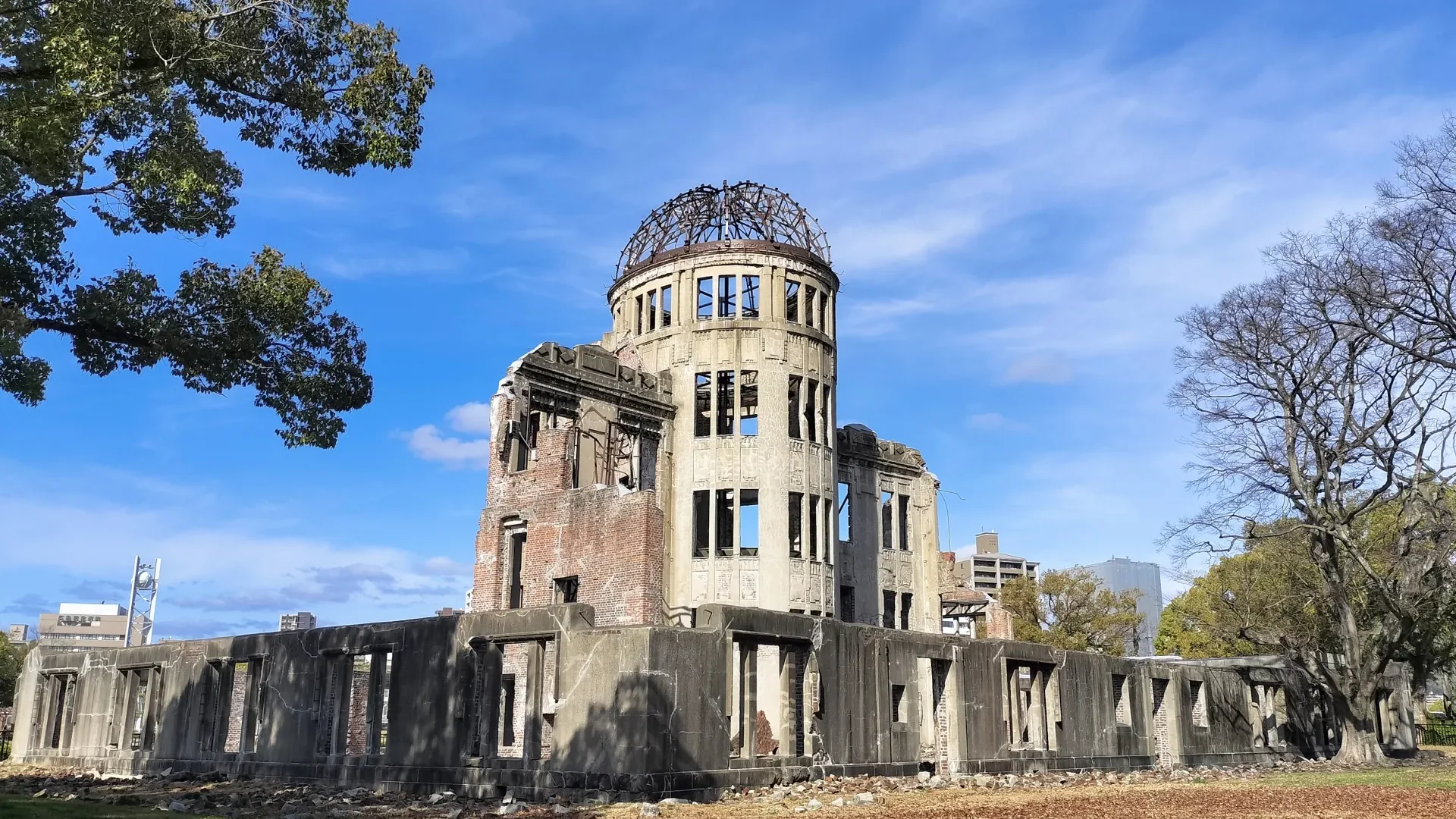
The Chugoku and Shikoku regions of Japan offer a harmonious blend of natural beauty and cultural heritage. Chugoku, located in western Japan, features iconic landmarks such as the historic city of Hiroshima and the scenic Seto Inland Sea. Shikoku, known for its pilgrimage routes and lush landscapes, boasts attractions like the ancient temples of the 88 Temple Pilgrimage and the picturesque Naruto Whirlpools. Together, these regions provide visitors with a rich tapestry of experiences, from historical exploration to scenic adventures.
Hiroshima (広島県 ひろしまけん) – Hiroshima (広島 ひろしま)
- Largest City: Hiroshima (広島 ひろしま)
Hiroshima Prefecture, situated in western Japan, is a testament to resilience and peace. In Hiroshima City, its capital, visitors can pay homage to history at the Hiroshima Peace Memorial Park and Atomic Bomb Dome, which stand as powerful reminders of the city’s tragic past and its dedication to promoting peace. The vibrant city also offers cultural delights such as Hiroshima Castle and Shukkeien Garden, where tranquility amidst urban bustle is found. Indulge in Hiroshima’s culinary specialties like okonomiyaki and oysters at local eateries, or explore the nearby islands of Miyajima with its iconic floating torii gate and friendly deer. Hiroshima’s blend of poignant history, cultural richness, and scenic beauty creates a profound and unforgettable experience for visitors from around the world.
Yamaguchi (山口県 やまぐちけん) – Yamaguchi (山口 やまぐち)
- Largest City: Shimonoseki (下関 しものせき)
Yamaguchi Prefecture, nestled in Japan’s western region, is steeped in history and natural beauty. In Yamaguchi City, the prefectural capital, visitors can explore cultural landmarks such as Rurikoji Temple and the historic Kozan Park, offering serene gardens and historic architecture. Meanwhile, in Shimonoseki City, renowned for its fresh seafood, travelers can indulge in fugu (blowfish) cuisine and explore the bustling Karato Market. The city’s iconic Kanmon Bridge connects Shimonoseki to Kitakyushu, offering stunning views of the Kanmon Strait. Nature enthusiasts can hike through the lush landscapes of Akiyoshidai Plateau or relax on the tranquil shores of Tsunoshima Island. With its rich heritage, culinary delights, and picturesque landscapes, Yamaguchi Prefecture promises a memorable journey through Japan’s cultural and natural treasures.
Tottori (鳥取県 とっとりけん) – Tottori (鳥取 とっとり)
- Largest City: Tottori (鳥取 とっとり)
Tottori Prefecture, nestled along the Sea of Japan coast, is renowned for its vast sand dunes and picturesque landscapes. In Tottori City, the prefectural capital, visitors can explore historic gems like the ruins of Tottori Castle and the atmospheric streets of the Kurayoshi district. Nature enthusiasts flock to the Tottori Sand Dunes, a surreal desert-like expanse offering camel rides and stunning sunset views over the ocean. Additionally, the serene beauty of Mount Daisen and the tranquil waters of Lake Nakaumi provide ample opportunities for outdoor adventures. Tottori’s unique blend of natural wonders and cultural heritage promises an unforgettable journey off the beaten path in Japan.
Shimane (島根県 しまねけん) – Matsue (松江 まつえ)
- Largest City: Matsue (松江 まつえ)
Shimane Prefecture, located on the western coast of Japan’s main island, is steeped in history and natural beauty. In Matsue City, the prefectural capital, visitors can explore Matsue Castle, known as the “Black Castle,” which offers panoramic views of the city and nearby Lake Shinji. Strolling along the charming canals of the “Water City” district provides a glimpse into traditional Japanese architecture and culture. Nature lovers can escape to the tranquil landscapes of Lake Shinji and Lake Nakaumi, or venture to the rugged Oki Islands for a taste of island life and pristine beaches. With its rich cultural heritage and stunning scenery, Matsue and Shimane Prefecture offer a serene retreat from the hustle and bustle of modern life.
Okayama (岡山県 おかやまけん) – Okayama (岡山 おかやま)
- Largest City: Okayama (岡山 おかやま)
Okayama Prefecture, nestled in Japan’s Chugoku region, is renowned for its blend of historic charm and modern sophistication. In Okayama City, the prefectural capital, visitors can explore the iconic Okayama Castle, also known as “Crow Castle,” and stroll through the picturesque Korakuen Garden, one of Japan’s three great gardens. The city’s bustling streets are lined with trendy boutiques, traditional tea houses, and delicious local eateries serving up Okayama’s famous white peaches and savory kibi dango. Nature enthusiasts can escape to the serene beauty of the Seto Inland Sea coastline or hike through the rugged landscapes of the Kibi Plain. With its rich cultural heritage, culinary delights, and scenic landscapes, Okayama City offers a delightful blend of old and new for travelers to explore and enjoy.
Tokushima (徳島県 とくしまけん) – Tokushima (徳島 とくしま)
- Largest City: Tokushima (徳島 とくしま)
Tokushima Prefecture, located on the eastern coast of Shikoku Island, is known for its stunning natural landscapes and vibrant cultural heritage. In Tokushima City, the prefectural capital, visitors can experience the energetic atmosphere of the Awa Odori Festival, one of Japan’s largest traditional dance events held annually in August. The city also offers historical sites such as Tokushima Castle Ruins Park and the tranquil beauty of Shinmachigawa Mizugiwa Park along the Yoshino River. Nature enthusiasts can explore the rugged beauty of the Iya Valley, known for its vine bridges and deep gorges, or hike along the picturesque trails of the Shikoku Pilgrimage route. Tokushima’s blend of cultural richness and natural beauty offers visitors a unique and unforgettable experience in Japan.
Kagawa (香川県 かがわけん) – Takamatsu (高松 たかまつ)
- Largest City: Takamatsu (高松 たかまつ)
agawa Prefecture, nestled in Japan’s Shikoku region, is renowned for its culinary delights and scenic beauty. In Takamatsu City, the prefectural capital, visitors can explore the historic Ritsurin Garden, a masterpiece of Japanese landscape design featuring ponds, bridges, and meticulously manicured trees. The city’s bustling streets are lined with charming shops and eateries, offering a taste of Kagawa’s famous Sanuki udon noodles and local specialties like olive products. Art enthusiasts can visit the nearby island of Naoshima, known for its contemporary art museums and installations. Meanwhile, the Seto Ohashi Bridge offers panoramic views of the Seto Inland Sea. With its blend of cultural attractions, culinary delights, and natural beauty, Kagawa Prefecture promises a memorable and enriching experience for travelers.
Ehime (愛媛県 えひめけん) – Matsuyama (松山 まつやま)
- Largest City: Matsuyama (松山 まつやま)
Ehime Prefecture, located on the island of Shikoku, is celebrated for its scenic landscapes and rich cultural heritage. In Matsuyama City, the prefectural capital, visitors can journey back in time at Matsuyama Castle, one of Japan’s twelve original castles, offering panoramic views of the city and Seto Inland Sea. The city’s Dogo Onsen, one of Japan’s oldest hot springs, provides a rejuvenating experience amidst historic surroundings, famously featured in the classic anime film “Spirited Away.” Nature enthusiasts can explore the lush beauty of Shikoku Karst or relax on the sandy shores of the Shimanami Kaido cycling route, connecting Shikoku to Honshu. With its blend of historical landmarks, natural wonders, and warm hospitality, Ehime Prefecture promises a delightful journey through Japan’s cultural and scenic treasures.
Kochi (高知県 こうちけん) – Kochi (高知 こうち)
- Largest City: Kochi (高知 こうち)
Kochi Prefecture, located on the southern coast of Shikoku Island, boasts a rich blend of natural beauty and cultural heritage. In Kochi City, the prefectural capital, visitors can immerse themselves in history at Kochi Castle, renowned for its elegant architecture and stunning views of the surrounding area. The city’s bustling Sunday Market offers a taste of local life and a chance to sample Kochi’s famous regional cuisine, including katsuo tataki (seared bonito) and yuzu-flavored dishes. Nature enthusiasts can explore the rugged coastline of Cape Ashizuri or hike through the pristine forests of the Shimanto River Valley, known as Japan’s last clear stream. With its vibrant culture, flavorful cuisine, and breathtaking landscapes, Kochi Prefecture invites travelers to discover the true essence of rural Japan.
Kyushu and Okinawa

Kyushu and Okinawa, located in the southwestern part of Japan, are known for their natural beauty and unique culture. Kyushu offers a mild climate, hot springs, beautiful valleys, and historical attractions like castles and shrines. Okinawa features stunning beaches, coral reefs, and its distinct Ryukyu culture, offering cultural experiences such as traditional dances and crafts. These regions are appealing destinations for travelers seeking to immerse themselves in Japan’s traditions and natural wonders.
Fukuoka (福岡県 ふくおかけん) – Fukuoka (福岡 ふくおか)
- Largest City: Fukuoka (福岡 ふくおか)
Fukuoka Prefecture, situated on the northern shore of Kyushu Island, is a vibrant blend of modernity and tradition. In Fukuoka City, the prefectural capital and largest city in Kyushu, visitors can experience the bustling energy of the Hakata district, renowned for its yatai (street food stalls) serving local specialties like Hakata ramen and mentaiko (spicy cod roe). The city’s historic landmarks include the ruins of Fukuoka Castle and the serene Dazaifu Tenmangu Shrine, dedicated to the deity of learning. Nature lovers can escape to the scenic shores of Nokonoshima Island or explore the lush landscapes of the Itoshima Peninsula. With its dynamic urban culture, rich history, and natural beauty, Fukuoka Prefecture offers a diverse and unforgettable experience for travelers.
Saga (佐賀県 さがけん) – Saga (佐賀 さが)
- Largest City: Saga (佐賀 さが)
Saga Prefecture, located in the northwestern part of Kyushu Island, is renowned for its historical sites and natural beauty. In Saga City, the prefectural capital, visitors can explore the ruins of Saga Castle and stroll through the tranquil gardens of Ogi Park, famous for its cherry blossoms in spring. The city’s Yoshinogari Historical Park offers a fascinating glimpse into Japan’s ancient Yayoi period, with reconstructed village structures and artifacts. Nature enthusiasts can relax in the hot springs of Ureshino or hike through the scenic landscapes of the Mifuneyama Rakuen Park. Saga’s blend of history, culture, and natural wonders provides a captivating experience for travelers exploring Japan’s hidden gems.
Nagasaki (長崎県 ながさきけん) – Nagasaki (長崎 ながさき)
- Largest City: Nagasaki (長崎 ながさき)
Nagasaki Prefecture, situated on the northwest coast of Kyushu Island, is steeped in history and known for its picturesque landscapes. In Nagasaki City, the prefectural capital, visitors can delve into the city’s rich cultural heritage at sites like the Nagasaki Peace Park, commemorating the atomic bombing in World War II, and the Glover Garden, showcasing Western-style residences from the Meiji era. The city’s unique blend of Japanese and foreign influences is evident in its diverse cuisine, including the famous Nagasaki champon and sara udon dishes. Nature lovers can explore the stunning vistas of Mount Inasa or take a leisurely stroll along the tranquil Megane Bridge. With its poignant history, cultural diversity, and natural beauty, Nagasaki Prefecture offers a memorable journey through Japan’s past and present.
Kumamoto (熊本県 くまもとけん) – Kumamoto (熊本 くまもと)
- Largest City: Kumamoto (熊本 くまもと)
Kumamoto Prefecture, nestled in the heart of Kyushu Island, is renowned for its rich history and stunning natural landscapes. In Kumamoto City, the prefectural capital, visitors can explore the majestic Kumamoto Castle, one of Japan’s most impressive fortresses, and wander through the tranquil Suizenji Jojuen Garden, known for its meticulously landscaped ponds and miniature landscapes. The city’s vibrant atmosphere is complemented by its bustling streets filled with local eateries serving Kumamoto’s famous basashi (horse sashimi) and karashi renkon (lotus root stuffed with spicy mustard). Nature enthusiasts can venture to the scenic Aso region, home to Mount Aso, one of the world’s largest volcanic calderas, and the lush Kikuchi Gorge. With its blend of historical landmarks, culinary delights, and natural wonders, Kumamoto Prefecture promises a memorable and enriching experience for travelers.
Oita (大分県 おおいたけん) – Oita (大分 おおいた)
- Largest City: Oita (大分 おおいた)
Oita Prefecture, located on the eastern coast of Kyushu Island, is renowned for its hot springs and natural beauty. In Oita City, the prefectural capital, visitors can immerse themselves in the healing waters of Beppu Onsen, one of Japan’s most famous hot spring resorts, or explore the picturesque Takasakiyama Natural Zoological Garden, where wild monkeys roam freely. The city’s vibrant food scene offers delicacies such as toriten (tempura chicken) and Bungo beef, showcasing the region’s culinary delights. Nature lovers can hike through the verdant forests of Kuju Mountains or relax on the sandy shores of Hells Beach. With its abundance of hot springs, scenic landscapes, and delicious cuisine, Oita Prefecture offers a rejuvenating and memorable experience for travelers.
Miyazaki (宮崎県 みやざきけん) – Miyazaki (宮崎 みやざき)
- Largest City: Miyazaki (宮崎 みやざき)
Miyazaki Prefecture, situated in the southern part of Kyushu Island, is known for its stunning natural landscapes and cultural heritage. In Miyazaki City, the prefectural capital, visitors can explore the iconic Miyazaki Shrine, dedicated to the region’s legendary first emperor, Jimmu. The city’s beautiful coastline offers opportunities for surfing and sunbathing, with popular spots like Aoshima Island and Udo Shrine, perched on dramatic cliffs overlooking the sea. Food enthusiasts can savor local specialties such as Miyazaki beef and chicken nanban, a dish featuring fried chicken with tartar sauce. Nature lovers can hike through the lush forests of Takachiho Gorge or relax in the warm waters of the seaside resort town of Nichinan. With its blend of history, culture, and natural beauty, Miyazaki Prefecture offers a captivating escape for travelers seeking an authentic Japanese experience.
Kagoshima (鹿児島県 かごしまけん) – Kagoshima (鹿児島 かごしま)
- Largest City: Kagoshima (鹿児島 かごしま)
Kagoshima Prefecture, located at the southern tip of Kyushu Island, is renowned for its volcanic landscapes and rich cultural heritage. In Kagoshima City, the prefectural capital, visitors can marvel at the majestic Sakurajima volcano, which sits across the bay and offers breathtaking views and hot spring baths. The city’s historical sites include the beautifully landscaped Senganen Garden and the striking Shiroyama Park, offering panoramic vistas of the city and coastline. Food enthusiasts can indulge in Kagoshima’s renowned Kurobuta pork dishes and savory kibinago (silver-stripe herring) cuisine. Nature lovers can explore the lush forests of Yakushima Island, a UNESCO World Heritage Site, or relax on the sandy beaches of Amami Oshima. With its blend of natural wonders, cultural attractions, and delicious cuisine, Kagoshima Prefecture promises an unforgettable journey through Japan’s southern charm.
Okinawa (沖縄県 おきなわけん) – Naha (那覇 なは)
- Largest City: Naha (那覇 なは)
Okinawa Prefecture, a tropical paradise in the southernmost part of Japan, is renowned for its stunning beaches, vibrant culture, and rich history. In Naha City, the prefectural capital, visitors can explore the historic Shuri Castle, a UNESCO World Heritage Site, and immerse themselves in the bustling atmosphere of Kokusai Dori, a lively shopping street lined with shops, restaurants, and markets. The city’s vibrant nightlife offers an array of entertainment options, from traditional Ryukyu performances to trendy bars and clubs. Food enthusiasts can savor Okinawan delicacies such as Okinawa soba, Rafute (braised pork belly), and Agu pork dishes. Nature lovers can relax on the pristine shores of Naminoue Beach or explore the scenic beauty of Cape Manzamo and Cape Zanpa. With its unique blend of culture, history, and natural beauty, Okinawa Prefecture promises an unforgettable experience for travelers seeking sun, sea, and adventure.

